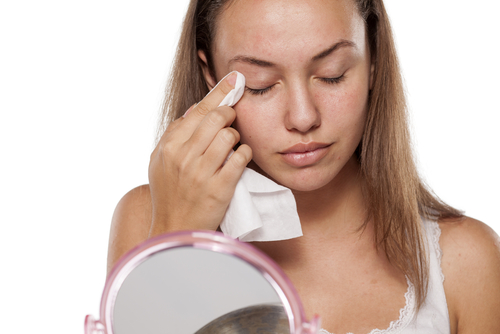What Is Meibomian Gland Dysfunction?
October 30th, 2020

Meibomian Gland Dysfunction (MGD) is a condition that occurs when the meibomian oil glands on your eyelids do not produce enough oil. It can also occur if the glands produce low-quality oil.
The meibomian glands are on the outside of your eyelids. Their edges touch when your eyelids are closed.
They produce the oil that is part of the tear film in your eyes. This oil keeps the water on your eyes from drying out. Keep reading to learn more about MGD!
What is MGD?
The combination of oil and water on the surface of your eye creates the eye’s tear film. You need the tear film for many reasons.
The tear film covers the surface of the eyes. It also protects your eyes and keeps them healthy.
If your eyes don’t have enough tear film, it can affect your vision. Your eyes can also become infected.
When your meibomian glands do not produce enough oil or the oil is low in quality, you may have MGD. This is a common condition and many people with MGD may not even realize they have it!
This is because many MGD patients don’t show any symptoms. Despite being asymptomatic, MGD can cause further eye complications if left untreated.
It can worsen the symptoms of dry eye syndrome and may make your eyelids inflamed.
Untreated MGD can cause your oil glands to become completely blocked. This inhibits the ability to produce any oil at all.
This means that the tear film on your eyes will be greatly reduced. It can cause permanent damage to your tear ducts and the tear film.
The tear ducts are vital to the health of your eyes. If your tears ducts can’t produce any tears that are high quality, your eyes will suffer. This may mean you end up with an infection or you develop dry eye syndrome, among other problems.
Symptoms of MGD
If you are experiencing any of the following symptoms, you may have MGD.
Symptoms include:
- Dry, itching, or burning eyes
- Stickiness or crusty eyelids
- Watery eyes
- Light sensitivity
- Red eyes
- Foreign body sensation where it feels like something is stuck in your eye
- Styes on the eyelids
- Intermittent blurry vision
MGD Treatment
The main course of treatment for MGD involves treating the eyelid and eyelash areas. This is because the meibomian glands are located on the edge of your eyelid.
You will want to clear any build-up of dead skin, oil, and bacteria on your eyelids. To get rid of this build-up, you’ll need to make sure you’re carefully clearing the debris from your eyelids.
Warm Your Eyelids
Start by warming your eyelids with a hot washcloth. This will increase the oil production of your meibomian glands.
Simply warm a washcloth so that is comfortable on your eyes. If it’s too hot, you’ll do more harm than good. Let the washcloth sit on your eyelids for at least five minutes. This will let any build-up start to loosen from your eyelids.
Massage Your Eyelids
Once you’ve warmed your eyelids, you can gently massage them. Roll your fingertips around your eyes as you look upward.
Then massage your eyelids as you look down. This will help break up any build of bacteria on your eyelid margins.
Scrub Your Eyelids
Finally, you will want to carefully scrub your eyelids with the hot washcloth. It may help to use a non-stingy, simple soap. Baby soap or CeraVe are good options.
One last note on MGD treatment is that omega-3 fatty acids have also been found to be helpful in treating and preventing MGD.
Need an eye exam? They are the best way to make sure your eyes are healthy. They can also diagnose MGD at the onset before it can do further damage.
Schedule your appointment with the Laser Eye Center in Huntsville, AL today!


